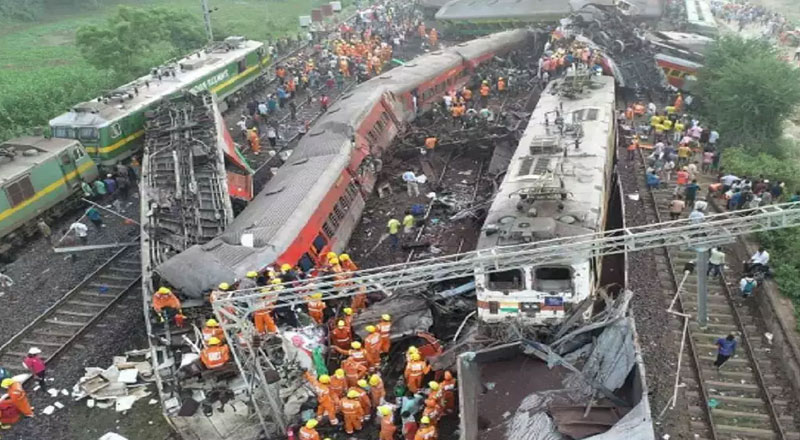- Railway Board has taken further measures to enhance safety protocols, following the tragic Odisha train incident that claimed the lives of over 280 people.
- The Railway Board emphasizes the need for a double-locking arrangement in relay rooms containing train controlling mechanisms, and telecommunications equipment of level-crossings, as well as point and track circuit signals.
- The interlocking systems are now aimed to be “tamper-proof” through the implementation of double locking.
- The current order establishes proper disconnection-reconnection protocols for signal maintenance, repair, and alteration works.
Following the tragic Odisha train incident that claimed the lives of over 280 people on June 2, the Railway Board has taken further measures to enhance safety protocols. Officials have announced that a double-locking arrangement will be implemented for all signalling assets, and additional directives have been issued to strengthen the procedure for train movement after maintenance work.
The recent communication from the Railway Board to railway zones emphasizes the need for a double-locking arrangement in relay rooms containing train controlling mechanisms, relay huts housing signalling and telecommunications equipment of level-crossings, as well as point and track circuit signals. This order stems from the understanding that the “signalling interference” that led to the Coromandel Express mistakenly taking the loop line at Balasore and colliding with a stationary goods train was a result of unauthorized access to the relay room.
Senior officials, having found evidence of tampering with the interlocking system, now aim to make it “tamper-proof” through the implementation of double locking. This measure ensures that access to these locations cannot be obtained by anyone in isolation, as explained by an officer.
The order specifies that the level crossing gate (goomty/cabin) housing signalling and telecommunications equipment in the station yard should be treated as a relay hut. Until the double-locking arrangement is in place, the key for the existing single lock will be kept with the Station Master (SM). The order also outlines the protocol for issuing and depositing the key, emphasizing that the SM should maintain the relevant entries regarding its use, similar to the station relay room. The proforma for handing over and taking back the key by the Assistant Station Manager (ASM) on duty will include a column verifying the closure and locking of the location by the maintenance staff returning the key.
Preliminary investigations have revealed that some maintenance work was being conducted near the accident site. It was discovered that the technician bypassed the system and manipulated the location box to obtain a “green signal” for the Coromandel Express, despite the work being incomplete.
To address such issues, the current order establishes proper disconnection-reconnection protocols for signal maintenance, repair, and alteration works. Once the SM accepts the reconnection for the first train following the completion of any work, the reception signal should not be taken off, and the train should be brought to a stop at the first stop signal. Likewise, the departure signal for run-through trains should only be activated after the first train has occupied the designated berthing portion.
(With inputs from agencies)





